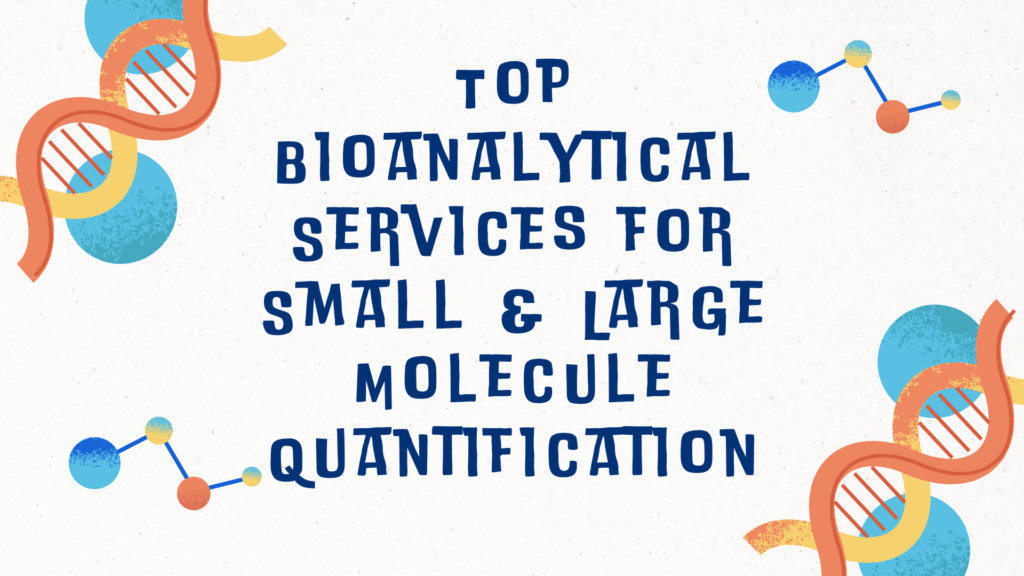
Introduction
As Health Canada tightens its regulatory oversight on pharmaceutical impurities, nitrosamine impurity testing for Health Canada has become a mandatory requirement for all new drug submissions and marketed drug products. At ResolveMass Laboratories Inc., we specialize in comprehensive nitrosamine analysis aligned with international guidelines, helping pharmaceutical companies navigate Health Canada’s expectations with confidence.
Whether you are filing a New Drug Submission (NDS) or responding to a Health Canada notice, our validated methods and expert team ensure that your products are compliant, safe, and submission-ready. In this blog, we will walk you through Health Canada’s requirements, analytical techniques, and how ResolveMass ensures robust nitrosamine impurity testing for Health Canada.
Explore our Nitrosamine Impurity Testing for Health Canada services to ensure regulatory readiness.
Why Nitrosamine Impurity Testing for Health Canada Matters
Nitrosamines are classified as probable human carcinogens. Several drug recalls and regulatory updates over the past few years have prompted both the U.S. FDA and Health Canada to implement mandatory nitrosamine impurity testing for APIs and drug products.
Health Canada’s policy, aligned with ICH M7(R2) and EMA guidelines, mandates manufacturers to conduct a risk assessment, implement confirmatory testing, and perform routine surveillance. Failure to comply may result in product withdrawal or delayed market entry.
Read more about Canada–U.S. Nitrosamine Impurity Testing Compliance.
Health Canada’s Regulatory Framework for Nitrosamine Impurity Testing for Health Canada
Step 1 – Risk Assessment
Health Canada requires pharmaceutical manufacturers to conduct a comprehensive nitrosamine risk assessment of their drug products and manufacturing processes. This assessment must include:
- Assessment of known nitrosamine formation pathways
- Review of excipients and API synthesis routes
- Identification of potential sources (solvents, reagents, packaging)
This is the foundation of nitrosamine impurity testing for Health Canada submissions.
Use our Nitrosamine Risk Assessment Template for a structured approach to initial evaluations.
Step 2 – Confirmatory Testing
If a risk is identified, confirmatory testing must be performed using validated analytical methods. ResolveMass Laboratories supports this by offering LC-MS/MS, GC-MS, and high-sensitivity methods capable of detecting nitrosamines down to <30 ppb, compliant with AI (acceptable intake) limits.
Learn more about our Nitrosamine Analysis Laboratory for confirmatory testing capabilities.
Step 3 – Mitigation and Documentation
Health Canada expects sponsors to implement mitigation strategies such as process optimization or vendor changes. Documentation of all testing and corrective actions is a key part of the submission.
Analytical Techniques for Nitrosamine Impurity Testing for Health Canada
LC-MS/MS – Liquid Chromatography Tandem Mass Spectrometry for Nitrosamine Impurity Testing for Health Canada
- Gold-standard for targeted quantification
- Detection limit: Sub-ppb for major nitrosamines like NDMA, NDEA
- Suitable for a wide range of APIs and drug products
GC-MS – Gas Chromatography Mass Spectrometry
- Effective for volatile nitrosamines
- Highly specific for NDMA, NDBA, NDIPA
- Ideal for generic drug substances and excipients
HRMS – High-Resolution Mass Spectrometry for Nitrosamine Impurity Testing for Health Canada
- Used for exploratory and non-targeted screening
- Ideal for complex matrices or unknown nitrosamines
NMR (Complementary Technique)
- Provides structural confirmation
- Used in combination with MS for unknown impurity identification
ResolveMass Laboratories brings together these techniques under validated protocols tailored specifically for nitrosamine impurity testing for Health Canada submissions.
When Do You Need Nitrosamine Impurity Testing for Health Canada?
- New Drug Submission (NDS)
- Abbreviated New Drug Submission (ANDS)
- Drug Identification Number (DIN) renewal
- Drug recall response
- Ongoing product monitoring
Whether you are in the preclinical, clinical, or post-marketing phase, Health Canada expects you to conduct rigorous nitrosamine impurity testing and provide documented evidence during each lifecycle stage.
ResolveMass Laboratories’ Approach to Nitrosamine Impurity Testing for Health Canada
Experience with Canadian Regulatory Filings for Nitrosamine Impurity Testing for Health Canada
Our scientific and regulatory team has worked extensively on projects requiring nitrosamine impurity testing for Health Canada and global regulatory bodies. We know what reviewers look for and ensure that your submission is compliant, complete, and audit-ready.
Validated Methods and Proven Track Record
Our testing procedures follow ICH M7(R2) and Health Canada’s guidance. We offer:
- Method development and validation
- Sensitivity to meet AI limits
- Full reporting with chromatograms and risk documentation
End-to-End Project Management
From sample pickup to report delivery, our team manages every step:
- Sample logistics support
- Batch-wise impurity testing
- Regulatory consultancy
Common Nitrosamines Detected in Health Canada Submissions
Some frequently detected nitrosamines include:
| Nitrosamine | Abbreviation | AI Limit (ng/day) |
|---|---|---|
| N-Nitrosodimethylamine | NDMA | 96 |
| N-Nitrosodiethylamine | NDEA | 26.5 |
| N-Nitrosomorpholine | NMOR | 127 |
| N-Nitrosopiperidine | NPIP | 102 |
We routinely screen for 10+ nitrosamines with detection levels as low as 5 ppb.
For deeper insights, visit our Nitrosamine Impurities in Pharmaceuticals page.
How to Get Started with Nitrosamine Impurity Testing for Health Canada
Step-by-Step Engagement
- Initial Consultation
Discuss your formulation, API, and manufacturing process - Risk Assessment Support
Leverage our experts for a full risk evaluation - Confirmatory Testing
Perform validated impurity testing in our laboratory - Data & Regulatory Reporting
Receive full documentation for your Health Canada filing
Conclusion: Why Nitrosamine Impurity Testing for Health Canada Matters More Than Ever
As regulatory scrutiny continues to increase, nitrosamine impurity testing for Health Canada is no longer optional—it’s essential. ResolveMass Laboratories provides the scientific rigor, validated methods, and regulatory expertise that ensure your submission stands up to Health Canada’s requirements.
If you’re preparing a submission or seeking to de-risk your manufacturing process, trust ResolveMass Laboratories to deliver reliable, reproducible results for nitrosamine impurity testing for Health Canada.
ResolveMass Laboratories Inc.: Experience, Expertise, and Trust You Can Count On
ResolveMass Laboratories Inc. has established itself as a trusted name in the domain of nitrosamine testing services in Canada. With over a decade of dedicated experience, we have completed hundreds of successful nitrosamine testing and risk assessment projects for both domestic and international clients.
We are one of the few Canadian CROs to offer a complete in-house nitrosamine testing solution—from risk assessment to confirmatory analysis, regulatory documentation, and expert consultation. We continually invest in cutting-edge technologies and method development, keeping pace with evolving regulations and industry demands.
Discover our innovation in AI-powered Nitrosamine Testing for high-throughput screening.
Ready to Get Started?
📩 Contact our expert team
📞 Request a quote for method development
📅 Book a consultation with our scientists
🧪 Submit your sample for testing
References
- EMA. (2021). Assessment and Mitigation of Nitrosamine Risk in Human Medicines. https://www.ema.europa.eu/en/documents/referral/nitrosamines-emea-h-a53-1490-assessment-report_en.pdf
- FDA. (2021). Control of Nitrosamine Impurities in Human Drugs. https://www.fda.gov/media/141720/download
- Health Canada. (2020). Guidance on Nitrosamine Impurities in Medications. https://www.canada.ca/en/health-canada/services/drugs-health-products.html
- ICH. (2023). ICH M7(R2) – Control of Mutagenic Impurities. https://database.ich.org/sites/default/files/M7_R2_Guideline_Step4_2023_0223.pdf
ICH Q3E Guideline for Extractables and Leachables: Complete Technical Breakdown for 2025
INTRODUCTION The ICH Q3E guideline for Extractables and Leachables provides the international standard for evaluating…
Extractables and Leachables (E&L) Testing in the USA vs. Europe: Regulatory Differences
INTRODUCTION Extractables and Leachables (E&L) Testing in the USA vs. Europe: Regulatory Differences is one…
The Role of Extractables and Leachables (E&L) in Carcinogenicity Risk
Introduction Extractables and Leachables Carcinogenicity Testing plays a vital role in protecting patients who rely…
Case Study: Forced Degradation Study of Gimeracil — Discovery and Structure Elucidation of Novel Impurities
Introduction Forced degradation studies are a cornerstone of modern pharmaceutical development, enabling scientists to intentionally…
Affordable Bioanalytical Services for Start-Up Biotech: What to Expect
INTRODUCTION Affordable bioanalytical services for start-up biotech companies provide the essential analytical support needed to…
Top Bioanalytical Services for Small & Large Molecule Quantification
Introduction Bioanalytical services for small & large molecule quantification are essential for ensuring precision, sensitivity,…







